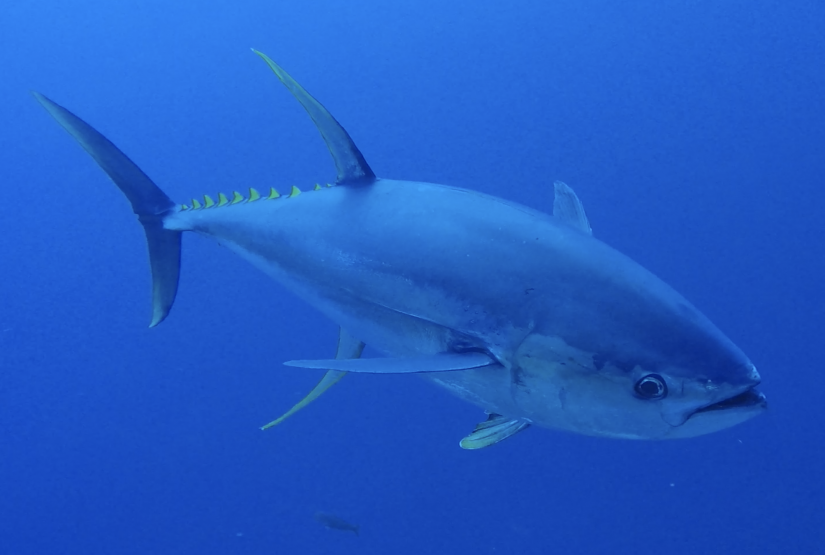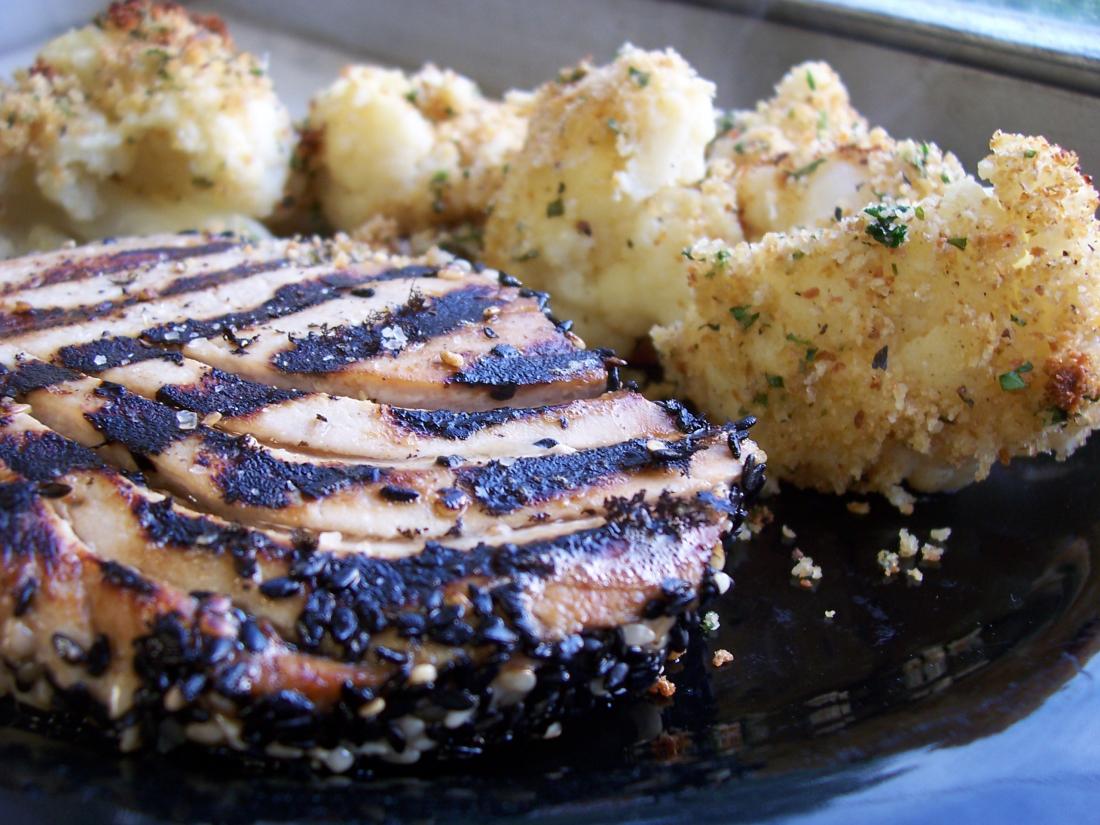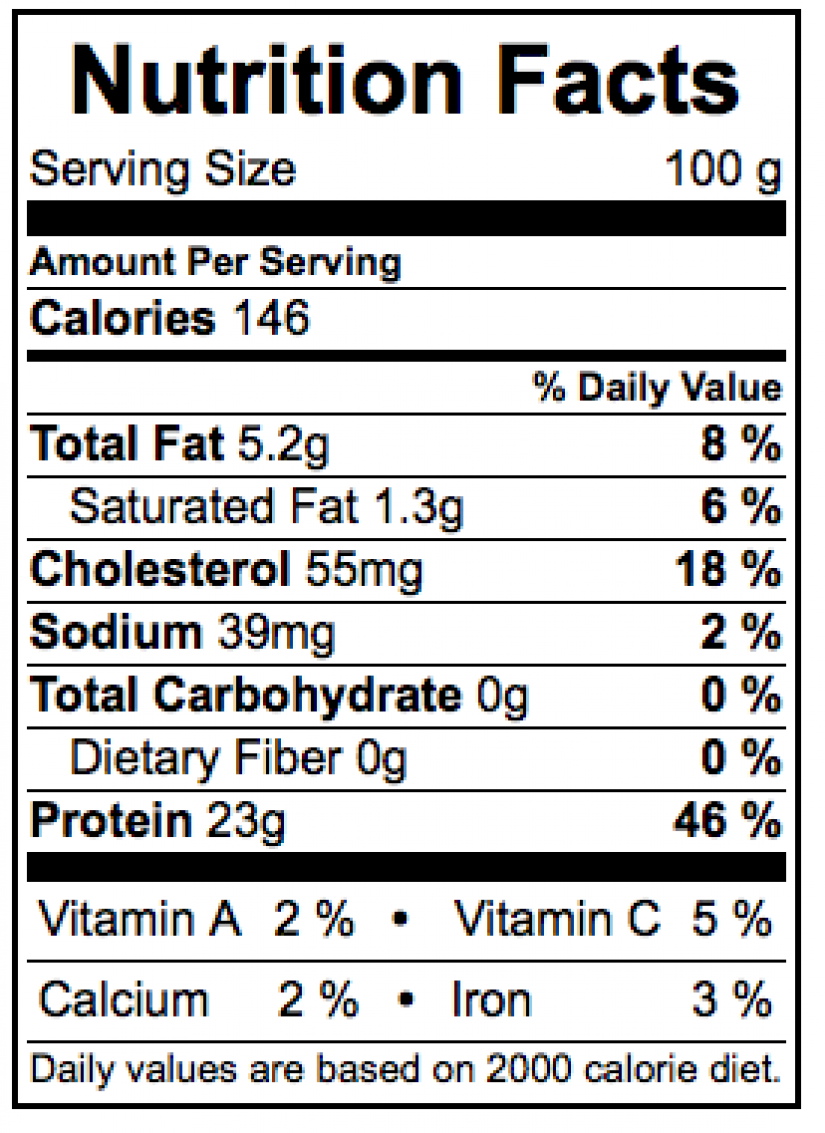California lawmakers take aim at ocean acidification
California Sea Grant is providing research to state policymakers working to develop strategies to combat ocean acidification.
California Sea Grant is providing research to state policymakers working to develop strategies to combat ocean acidification.
NOAA Sea Grant announces the award of $9.3 million in grants for 32 projects to advance the development of a sustainable marine and coastal aquaculture industry in the U.S.
No other fish can swim as fast or far as tuna; its fins help reduce turbulence and drag as it swims through the water.

Yellowfin tuna, like other tuna species, is highly migratory. It can travel across entire ocean basins and therefore requires cooperative international management to ensure its abundance and sustainability.

Yellowfin is sold as “light tuna” when canned, is called “ahi” when sold fresh or frozen, and called “maguro” when in sushi.


[1] FishWatch. 2013. Yellowfin Tuna. National Oceanic and Atmospheric Administration (NOAA) Fish Watch & Seafood Profiles. www.fishwatch.gov/seafood_profiles/species/tuna/species_pages/pacific_y…
[2] South Atlantic Fishery Management Council. 2013. Yellowfin Tuna. www.safmc.net/fishidandregs/fishgallery/yellowfintuna/tabid/257/default…
[3] Froese, R., Pauly, D., eds. 2008."Thunnus albacares" in FishBase. www.fishbase.org/summary/SpeciesSummary.php?genusname=Thunnus&speciesna…
[4] Horst, J. 2013. Yellowfin! Louisiana Fisheries. www.seagrantfish.lsu.edu/resources/factsheets/yellowfin.htm
[5] FishWatch: 2013. Pacific Yellowfin Tuna. NOAA. www.fishwatch.gov/seafood_profiles/species/tuna/species_pages/pacific_y….
[6] Seafood Watch: 2013. Yellowfin Tuna. Monterey Bay Aquarium. www.montereybayaquarium.org/cr/seafoodwatch/web/sfw_factsheet.aspx?fid=….
[7] Roberts, S. 2010. Seafood Watch Yellowfin Tuna Report. Monterey Bay Aquarium. Monterey Bay Aquarium. www.montereybayaquarium.org/cr/cr_seafoodwatch/content/media/mba_seafoo…;.
[8] "Highly Migratory Species: Background." Pacific Fishery Management Council. Pacific Fishery Management Council, 20 Nov. 2012. Web. 10 Aug. 2013. www.pcouncil.org/highly-migratory-species/background/
[9] SELF Nutrition Data: Know What You Eat. 2013. Fish, tuna, fresh, yellowfin, raw.. http://nutritiondata.self.com/facts/finfish-and-shellfish-products/4150….
[10] California Dept. of Fish & Wildlife. 2013. Marine Sportfish Identification: Tunas & Mackerels.. www.dfg.ca.gov/marine/mspcont1.asp.
[11] Monterey Bay Aquarium. 2013. “Yellowfin tuna.” Seafood Watch. www.montereybayaquarium.org//cr/SeafoodWatch/web/sfw_factsheet.aspx?fid…;
[12] EDF Seafood Selector. 2013. Tuna. Environmental Defense Fund. http://seafood.edf.org/tuna.
[13] Riches, D.. 2013. Grilling Tuna: Rare or well you need to know the best method for grilling tuna. About.com. http://bbq.about.com/od/fishandseafood/a/aa103004a.htm
[14] Bauer, E.. 2006. Seared Ahi Tuna. Simply Recipes. http://www.simplyrecipes.com/recipes/seared_ahi_tuna/
Over 40 species of symbiotic parasites live on the gills and within the guts of yellowtail. [2]

No California Yellowtail can be taken commercially if it is less than 28 inches (71 cm) long. [9]
Known as Hamachi in sushi, this fish has a buttery texture due to its naturally high oil content. [3]


[1] James, K. 2014. California yellowtail, White seabass. Web. https://www.seafoodwatch.org/-/m/sfw/pdf/reports/s/mba_seafoodwatch_cay…. Accessed: 30 May 2017
[2] Sandoval, J. 2017. Seriola lalandi. Web. http://animaldiversity.org/accounts/Seriola_lalandi. Accessed: 30 May 2017
[3] Fishing Booker, 2017. Yellowtail Amberjack Fishing in San Diego California. Web. https://fishingbooker.com/fish/destination/yellowtail-amberjack/us/CA/s…. Accessed: 30 May 2017
[4]Seafood Source. 2014. Yellowtail. Web. https://www.seafoodsource.com/seafood-handbook/finfish/yellowtail#intro…. Accessed: 29 May 2017
[5] Tuna Harbor Dockside Market, 2017. Web. http://thdocksidemarket.com/new/#species. Accessed: 30 May 2017
[6] Eat This Much, 2017. Yellowtail. 2017. Web. https://www.eatthismuch.com/food/view/yellowtail,3385. Accessed: 30 May 2017
[7] American Academy of Allergy Asthma and Immunology, 2017. Histamine Toxicity. Web. http://www.aaaai.org/conditions-and-treatments/related-conditions/hista…. Accessed: 30 May 2017
[8] NOAA Fisheries, 2017. CA Yellowtail/Barracuda/White Seabass Drift Gillnet Fishery. Web. http://www.nmfs.noaa.gov/pr/interactions/fisheries/table1/wcr/ca_yt-b-w…. Accessed: 30 May 2017.
[9] IUCN Red List, 2017. Seriola lalandi. Web. http://www.iucnredlist.org/details/195097/0. Accessed: 30 May 2017.
[10] CA Department of Fish and Wildlife, 2013. California Marine Sportfish Identification. Web. https://www.wildlife.ca.gov/Fishing/Ocean/Fish-ID/Sportfish/Other-Fishe…. Accessed: 30 May 2017.
[11] Crooke, S. 2001. Status of the Fisheries Report, Yellowtail. CA Department of Fish and Wildlife, Marine Region, CA, USA.
[12] Yellowtail. Web. Nutritionvalue.org. Accessed: 21 September 2017.
[13] Yummly. 10 Best Yellowtail Recipes. Web. https://www.yummly.com/recipes/yellowtail. Accessed 07 Aug 2022.